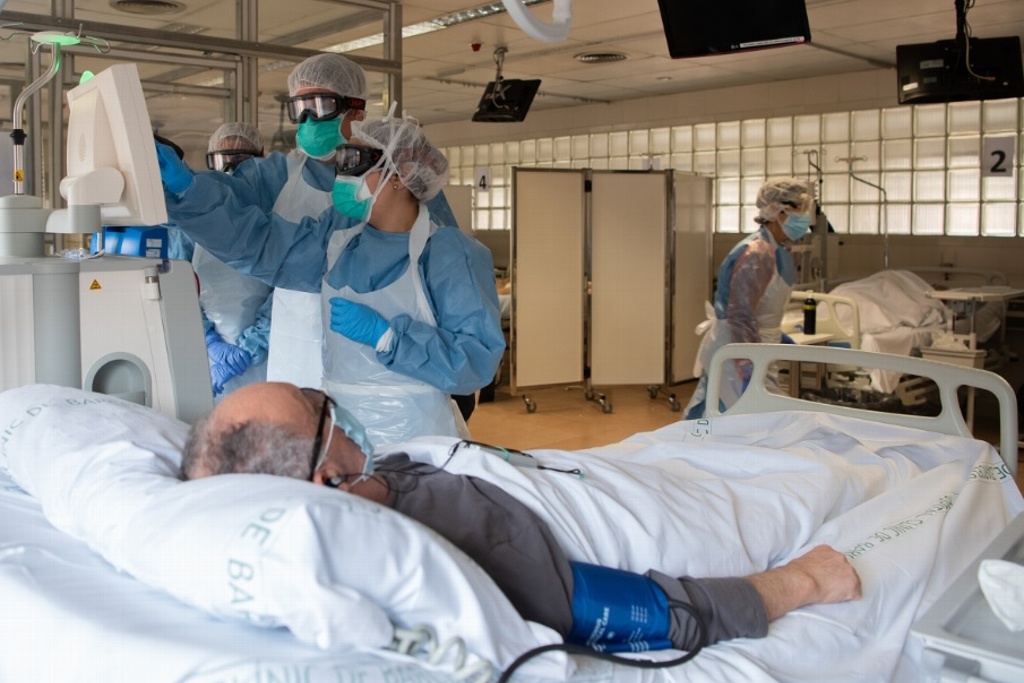RIO DE JANEIRO, BRAZIL – Doctor Òscar Miró recalls the “terrible” days of the Covid-19 plague in late March in Spain when people crowded outside the hospitals’ emergency room with the same pattern: high fever, lung wheezing, and suffocation. Masks were in short supply and health professionals were also ill.
“There was fear,” acknowledges Miró. Amid the chaos, the doctor and other colleagues began to observe “uncommon events”: patients with symptoms so strange that would only occur in one case in every thousand, at most. “Would it be a coincidence?”, they wondered.
Miró, research coordinator of the Barcelona Clínic Hospital’s Emergency Service, began to call colleagues from other cities to inquire if they had also seen atypical patients. They began to share data and the result is an unprecedented network of emergency room staff, called SIESTA, an acronym for “Spanish Investigators in Emergency Situations TeAm“.

They represent 60 public health facilities that serve over 15 million people, 33 percent of the Spanish population. And their data suggest that these strange events were not by chance.
The researchers analyzed the records of some 64,000 Covid-19 patients treated in the emergency room of Spanish hospitals during the first wave of the epidemic. They counted 45 cases of Myopericarditis – inflammation of the heart muscle and the membrane around it -, 36 of spontaneous pneumothorax – air leak from the lungs – and eight Guillain-Barré syndromes, a serious disorder in which the body’s defenses attack its own nervous system, causing muscle weakness and even paralysis.
All three manifestations are very rare in Covid-19 patients but are still more frequent than normal. Data from the SIESTA network show that Guillain-Barré syndrome is almost five times more common in coronavirus patients in emergency rooms than in other virus-free patients in the same service. Pneumothorax is twice as common. And the risk of Myopericarditis increases by 45 percent.
“We were able to observe that these processes are much more prevalent than expected in Covid patients. On the other hand, other manifestations that initially seemed to be linked to Covid-19, such as acute pancreatitis, may be the result of chance,” reflects Miró. One of the highlights of his research is that he analyzes patients as they reached hospitals in March and April before the distressing medical procedures altered their original symptoms. “We observe the spontaneous symptoms the patients had during the incubation period at home until they reached the emergency room,” highlights Miró.
The study, published in the specialized journal Epidemiology & Infection, does not show that these diseases are caused by the novel coronavirus, but it is a powerful indicator. And another. On April 17th, researchers from three hospitals in northern Italy reported five cases of Guillain-Barré allegedly linked to Covid-19.
The SIESTA network researchers believe their data “confirm the suspicion” that SARS-CoV-2 can trigger this syndrome, just as other viruses sometimes trigger “abnormal immune responses”, as is the case with Cytomegalovirus, Epstein-Barr virus, and Zika virus. The Spanish Ministry of Health already considers Guillain-Barré syndrome a possible “inflammatory complication” of Covid-19.
Doctor Juan González del Castillo, of the San Carlos Clinical Hospital in Madrid, was yet another of the initiators of the SIESTA network, which includes hospitals in virtually all the autonomous regions, such as La Fe (Valencia), Reina Sofía (Murcia), Álvaro Cunqueiro (Vigo) and La Paz (Madrid). The researchers observed seven cases of Myopericarditis, almost six of Pneumothorax, and little more than one Guillain-Barré syndrome in every 10,000 patients.
“The work intends to be an alert from an epidemiological perspective, but it does not delve into the underlying processes involved, although it is very easy to assume that the inflammatory processes are related to it,” says Miró. In some patients, the excessive immune system response turns out to be more dangerous than the virus itself.
The doctor believes that his findings are “an indirect sign” that the novel coronavirus, in addition to having a connection with the lungs, could also present “a special tropism to reach the central nervous system” in some patients.
A study of 214 patients hospitalized in the Chinese city of Wuhan at the start of the pandemic has shown that many of them had neurological symptoms, such as dizziness (17 percent) and headaches (13 percent). Spanish researchers call for a “systematic investigation” of possible SARS-CoV-2 infections in patients with Guillain-Barré syndrome, Myopericarditis, and spontaneous pneumothorax.
Source: El País

